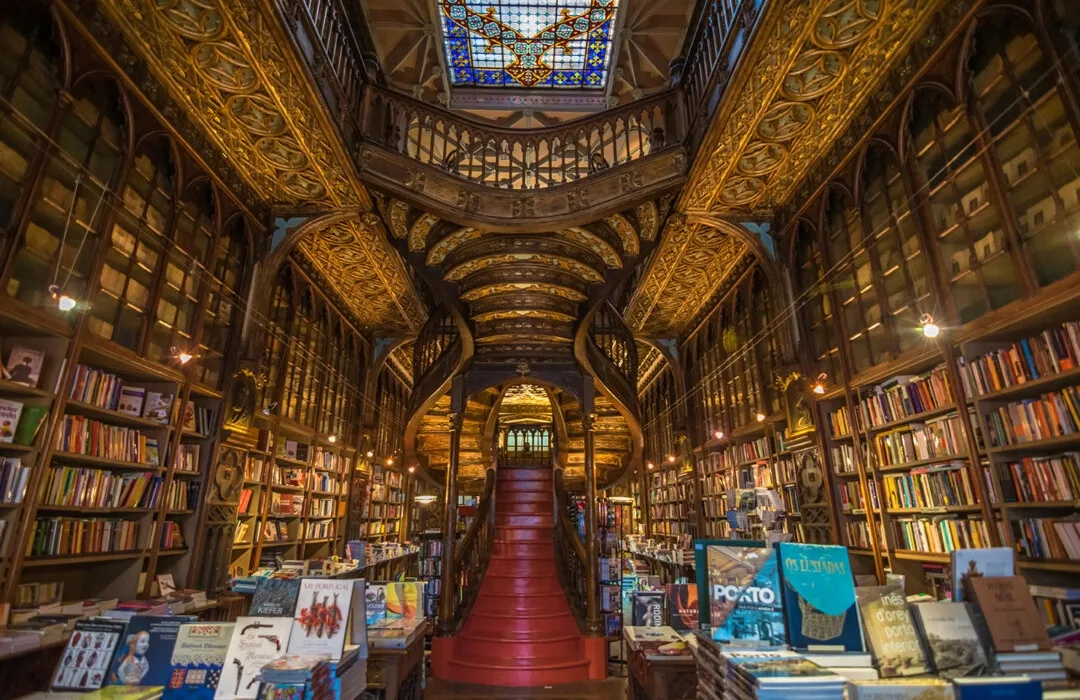Books are secondary in the Livraria Lello’s extraordinary main interior space, which brims with copious visual details. The central focus is the sweeping, forked staircase that features crimson-painted steps and is accentuated with a carved banister and railing. The second-floor ceiling’s magnificent stained glass is viewable from the first floor. Wooden floor-to-ceiling bookcases, some open and some enclosed in glass, are separated by carefully crafted segments featuring large quatrefoil designs. Nido Huebl/Shutterstock
In this installment of ‘Larger Than Life: Architecture Through the Ages,’ we visit one of the most ornate expressions of the Neo-Gothic style.
Magical is a word visitors have used to describe Livraria Lello in Porto, Portugal. While the bookstore’s exterior is fairly unassuming, it does feature distinct tracery (ornamental stone work) and signature Portuguese azulejo painted tin-glazed ceramic tile. The bookstore’s interior features embellishment galore: intricate woodworking, brightly hued stained glass, and painstakingly complex plasterwork.
In 1906, Portuguese engineer Francisco Xavier Esteves created a unique architectural design for Livraria Lello that merged two primary styles. The main architectural style is neo-Gothic, with plenty of pointed arches, as well as rosette and foliage designs, giving the interior a vast medieval, church-like atmosphere. Meanwhile, the extravagant flowing lines in the staircase express art nouveau, which simulates nature with organic, linear rhythms.

Flanked by other shops, the Livraria Lello’s façade is distinguishable by its neo-Gothic style, including the tracery positioned above the three second-floor windows and the pinnacles, or small spires. Additionally, classical neo-Gothic quatrefoil designs decorate the two narrow column-like segments that separate the front of the bookstore from the two adjacent buildings. A wide, decorative, stone-carved arch outlines the store’s front entrance. Diego Grandi/Shutterstock
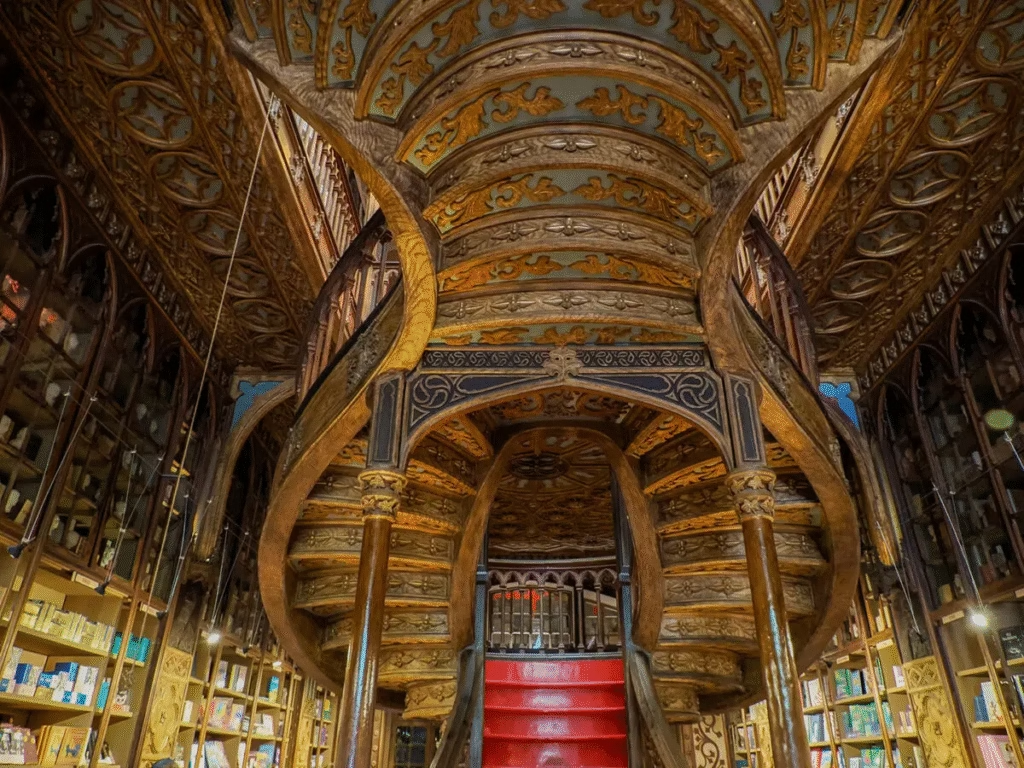
The underpinning of the curvaceous art nouveau-style grand staircase is extravagantly decorated with carved foliage designs painted gold against a pale-blue background. Flanking the bookshop’s iconic red steps are wooden Corinthian columns topped with two-tiered, acanthus leaf-adorned capitals. Andrea Izzotti/Shutterstock
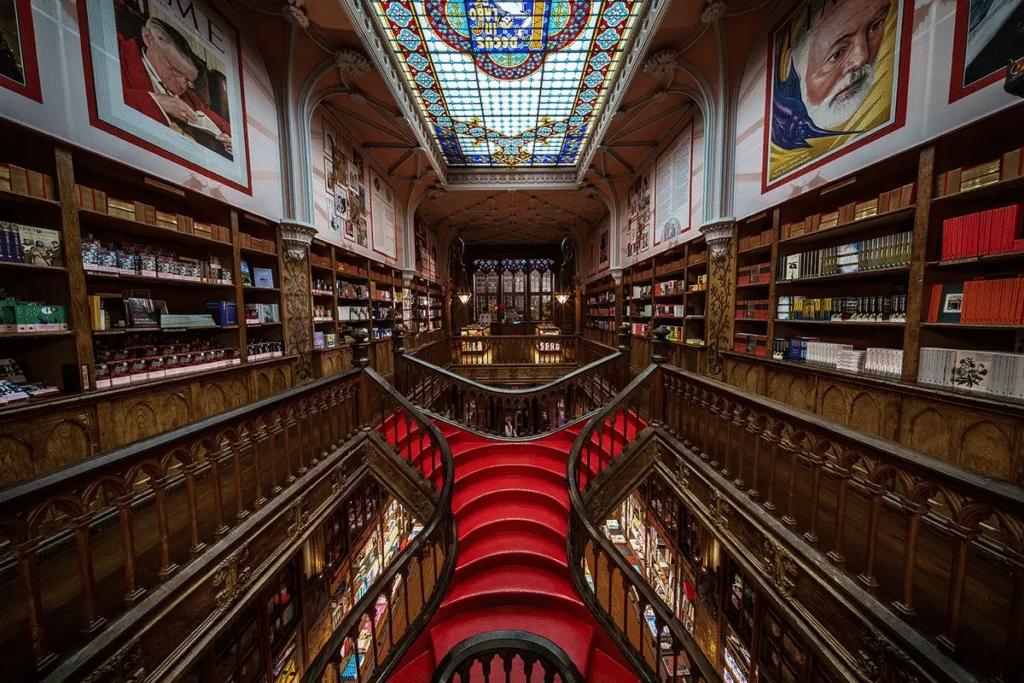
The second floor is an open gallery of bookcases accessible from either side of the red forked staircase. Light floods through the immense stained glass skylight, and the ceiling and walls’ intricate plasterwork and buttress-like details accentuate the bookshop’s artwork. R.M. Nunes/Shutterstock
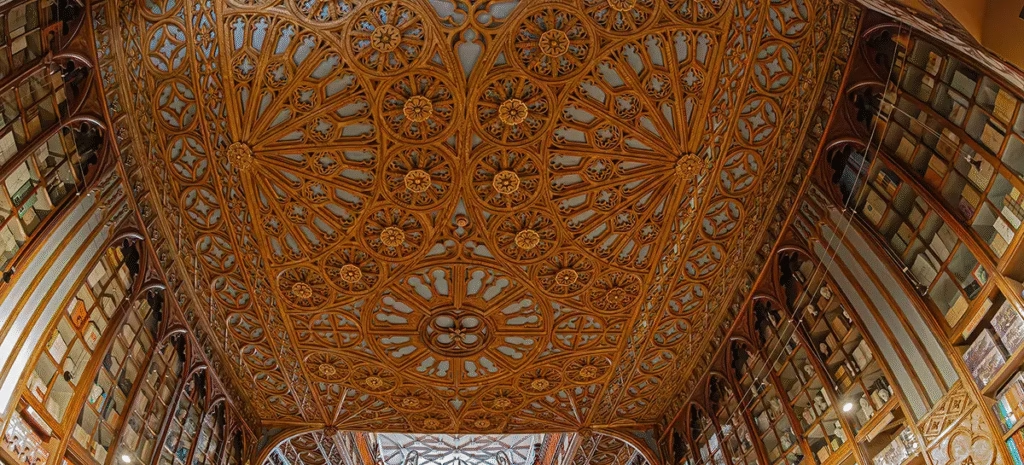
Designed to convey a hand-carved wood appearance, the bookstore’s ceiling presents stunning blue-and-gold plasterwork. Fans and rosettes are among the neo-Gothic and art nouveau elements featured in the design. Florin Cnejevici/Shutterstock
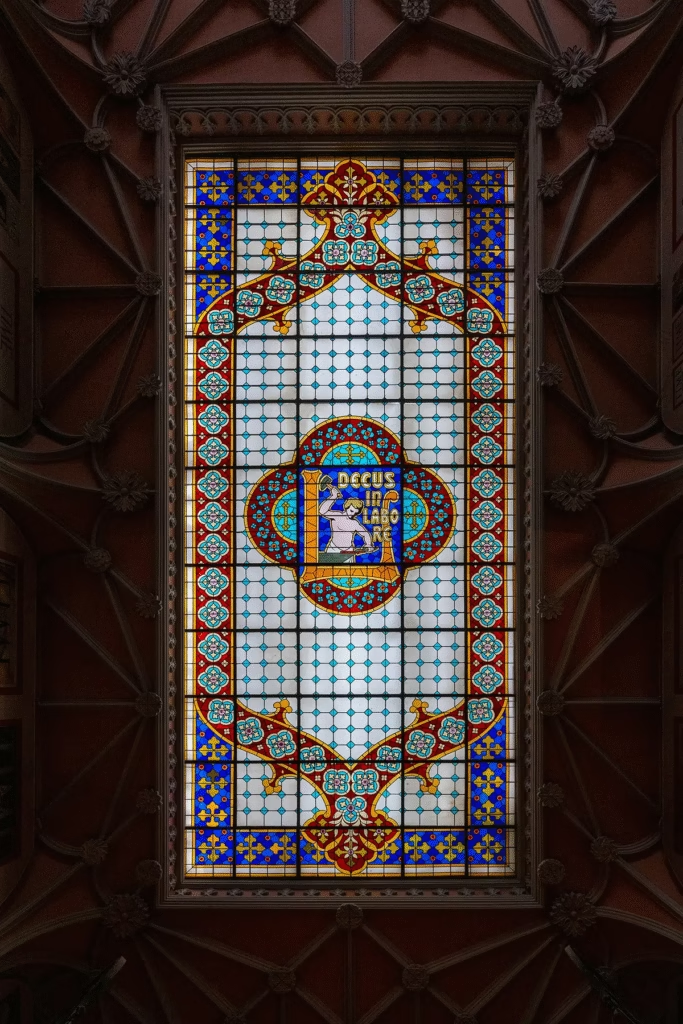
The second-floor skylight was designed by the Dutch stained-glass artist Samuel Van Krieken. The skylight serves as a focal point due to its size, 26 feet by 11 feet, and its intense colors. The Latin phrase “Decus in Labore,” which means “dignity in work,” is featured in the middle. Felix Lipov/Shutterstock
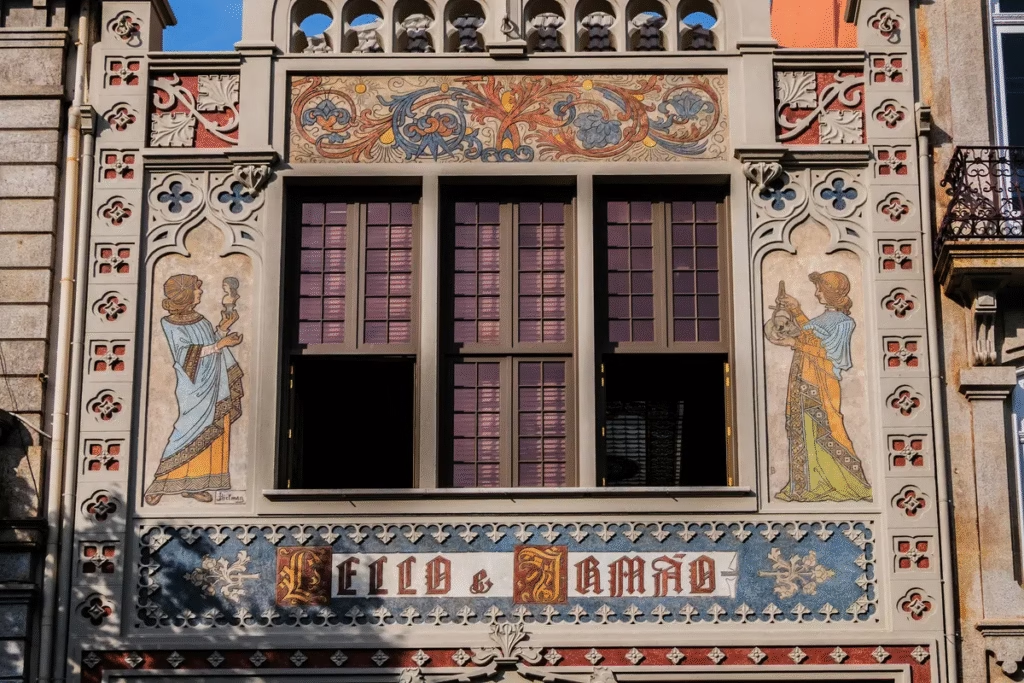
Paintings of women representing art and science are set inside a Gothic-style frame, atop which sit two quatrefoil designs. The three second-floor windows are topped with an art-nouveau style painting, while the words “Lello & Brother” adorn the store’s entryway. Kiev.Victor/Shutterstock
From The Epoch Times
✉️ Stay Connected — Subscribe for Weekly Updates
Discover timeless stories, practical wisdom, and beautiful culture — delivered straight to your inbox.
*We only share valuable insights — no spam, ever.




